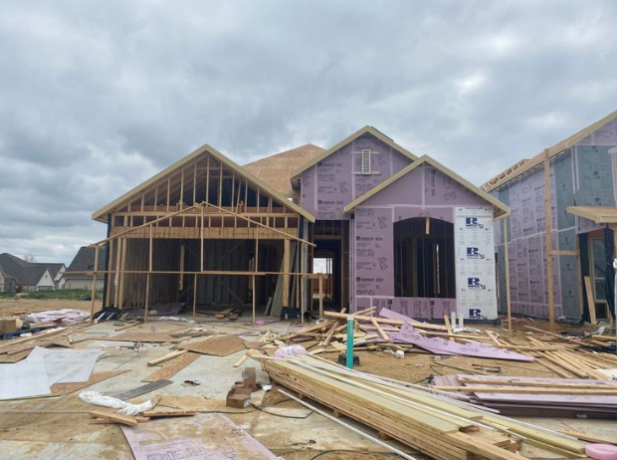
Upgrading your home to be more energy-efficient is one of the best investments you can make. Not only does it reduce your utility bills, but it also lessens your environmental footprint. Implementing energy-efficient upgrades can be a win-win situation, providing financial savings while contributing to a healthier planet. In this guide, we’ll explore various energy-efficient home upgrades and how they can save you money and help the environment.
Subtitles:
- Key Energy-Efficient Upgrades for Your Home
- Long-Term Benefits of Energy Efficiency
Key Energy-Efficient Upgrades for Your Home
1. Insulation and Sealing
One of the most effective ways to improve your home’s energy efficiency is enhancing its insulation and sealing any leaks. Proper insulation helps maintain a consistent indoor temperature, reducing the need for heating and cooling.
Tips:
- Attic Insulation: Ensure your attic is well-insulated, as this is where most heat escapes in the winter and enters in the summer. Use materials like fiberglass, cellulose, or spray foam for optimal results.
- Wall Insulation: Insulate your walls to prevent heat transfer. Blown-in insulation or rigid foam boards are excellent options for retrofitting existing walls.
- Seal Leaks: Use weatherstripping and caulk to seal gaps around windows, doors, and other openings. This prevents drafts and reduces energy loss.
2. Energy-Efficient Windows
Upgrading to energy-efficient windows can significantly reduce your energy consumption. These windows are designed to minimize heat transfer, keeping your home warmer in the winter and cooler in the summer.
Tips:
- Double or Triple Glazing: Choose windows with double or triple glazing. These have multiple panes of glass with insulating gas between them, which reduces heat loss.
- Low-E Coatings: Select windows with low-emissivity (Low-E) coatings. These coatings reflect heat back into your home during the winter and block heat from entering during the summer.
- Window Frames: Opt for energy-efficient window frames made from materials like vinyl, wood, or fiberglass. These materials offer better insulation than traditional aluminum frames.
3. Heating and Cooling Systems
Heating and cooling account for a significant portion of your home’s energy use. Upgrading to more efficient systems can lead to substantial savings on your utility bills.
Tips:
- Programmable Thermostats: Install programmable thermostats to automatically adjust the temperature based on your schedule. This prevents unnecessary heating or cooling when you’re not home.
- High-Efficiency HVAC Systems: Replace old HVAC systems with high-efficiency models. Look for units with high Seasonal Energy Efficiency Ratio (SEER) and Annual Fuel Utilization Efficiency (AFUE) ratings.
- Heat Pumps: Consider using heat pumps, which are more energy-efficient than traditional heating and cooling systems. They work transferring heat rather than generating it, making them an eco-friendly option.
4. Lighting
Lighting is another area where you can make energy-efficient upgrades. Switching to energy-efficient lighting options can reduce your electricity consumption and lower your bills.
Tips:
- LED Bulbs: Replace incandescent bulbs with LED bulbs. LEDs use up to 80% less energy and last significantly longer than traditional bulbs.
- Smart Lighting: Use smart lighting systems that allow you to control your lights remotely. This ensures that lights are only on when needed, reducing energy waste.
- Natural Light: Maximize natural light using light-colored walls and strategic window placements. This reduces the need for artificial lighting during the day.
5. Appliances and Electronics
Modern appliances and electronics are designed to be more energy-efficient than older models. Upgrading these devices can lead to considerable energy savings.
Tips:
- Energy Star Appliances: Look for appliances with the Energy Star label, which indicates they meet strict energy efficiency guidelines set the EPA. Common Energy Star appliances include refrigerators, dishwashers, and washing machines.
- Smart Power Strips: Use smart power strips to reduce “phantom” energy consumption. These strips automatically cut power to devices that are not in use, preventing energy waste.
- Efficient Electronics: Choose energy-efficient electronics, such as LED TVs and laptops with high energy efficiency ratings. These devices use less power and can save you money over time.
Long-Term Benefits of Energy Efficiency
1. Financial Savings
One of the most immediate and tangible benefits of energy-efficient upgrades is the reduction in your energy bills. While some upgrades may require an initial investment, the long-term savings often outweigh the costs.
Examples:
- Lower Utility Bills: Energy-efficient homes use less electricity, gas, and water, leading to lower monthly utility bills. For example, upgrading to LED lighting can save you up to $75 per year on energy costs.
- Increased Home Value: Energy-efficient homes are more attractive to buyers. According to studies, homes with energy-efficient features sell for higher prices and spend less time on the market.
- Government Incentives: Many governments offer rebates, tax credits, and other incentives for making energy-efficient upgrades. These programs can help offset the initial costs and make the upgrades more affordable.
2. Environmental Impact
Beyond financial savings, energy-efficient upgrades have a significant positive impact on the environment. By reducing your energy consumption, you contribute to a healthier planet.
Examples:
- Reduced Carbon Footprint: Energy-efficient homes produce fewer greenhouse gas emissions. For instance, using energy-efficient appliances can reduce your home’s carbon footprint several tons per year.
- Conservation of Resources: Energy-efficient upgrades help conserve natural resources reducing the demand for electricity, gas, and water. This is crucial for sustainable living and protecting the environment for future generations.
- Waste Reduction: Energy-efficient products often have longer lifespans, reducing the amount of waste generated. For example, LED bulbs last up to 25 times longer than incandescent bulbs, resulting in fewer replacements and less waste.
3. Improved Comfort and Health
Energy-efficient upgrades can also enhance the comfort and health of your home. Proper insulation, efficient heating and cooling systems, and better indoor air quality contribute to a more pleasant living environment.
Examples:
- Consistent Temperatures: Enhanced insulation and efficient HVAC systems maintain consistent indoor temperatures, eliminating drafts and hot or cold spots.
- Better Air Quality: Energy-efficient homes often have better ventilation and air filtration, reducing indoor pollutants and allergens. This is particularly important for individuals with respiratory issues or allergies.
- Noise Reduction: Insulated windows and walls can reduce outside noise, creating a quieter and more peaceful home environment.
Upgrading your home to be more energy-efficient offers numerous benefits, from financial savings to environmental conservation and improved comfort. By implementing these key energy-efficient upgrades, you can create a more sustainable and cost-effective living space. Whether you start with small changes like switching to LED bulbs or undertake larger projects like installing new insulation, every step towards energy efficiency makes a difference.


